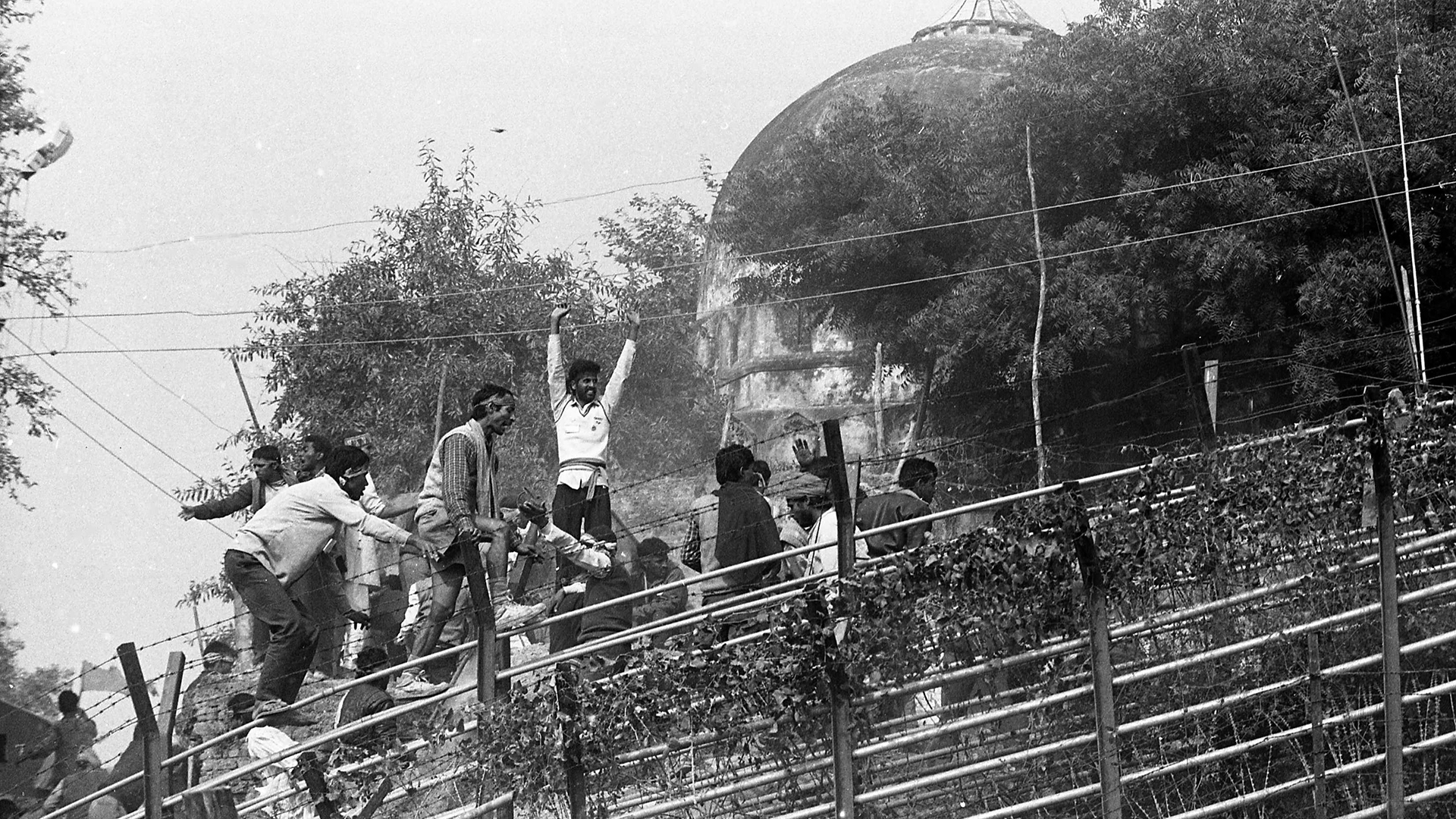Witness to destruction: Remembering the Babri Mosque demolition
27 years after the mosque in India was torn down, photographer Praveen Jain recounts the moment he knew it would happen.

Indian photojournalist Praveen Jain has covered dozens of riots, including the 1984 anti-Sikh massacre in New Delhi and 1989 Bhagalpur riots.
His photographs helped convict 16 members of the Provincial Armed Constabulary for the 1987 Hashimpura massacre when 42 Muslim youths were rounded up, shot dead and their bodies dumped in a canal.
Keep reading
list of 4 itemsPhotos: Ukraine marks its third Easter at war
Israeli police detain Greek consul’s guard at Orthodox Easter ceremony
Gunman kills at least six in attack on mosque in Afghanistan’s Herat
On December 6, 1992, he captured the demolition of the 16th century Babri Mosque in Ayodhya by Hindu nationalists. The events of that day would lead to religious riots in which 2,000 mostly Muslim Indians were killed.
Here, Jain tells journalist Vaibhav Vats about the events of that day.
I had joined The Pioneer newspaper in 1987. For a few years I had been covering the Ayodhya movement, the right-wing mobilisation in India for the construction of a temple for Lord Ram on the site where Babri Masjid – a 16th-century mosque – stood. I had been to Ayodhya two or three times before the events of December 1992.
On December 4, I reached Ayodhya after being assigned to go there by the legendary editor Vinod Mehta. By December 5, I had a feeling that Babri Masjid was going to be demolished.
During a press conference, we had asked Ashok Singhal, the leader of the right-wing Hindu activist group, Vishwa Hindu Parishad (VHP), about the organisation’s plans. He merely smiled in a conspiratorial manner and said: “Just wait and watch.”
On December 5, they did a rehearsal near the mosque. No media were allowed; I was the only journalist present. BL Sharma, another leader of the VHP, was a friend of mine whom I had known for years. He told me to meet him that morning, promising to show me something interesting.
The day came and Sharma gave me a VHP identity card to enter the site where the rehearsal of the demolition would take place, telling me to pass myself off as a VHP photographer. He then took me to see the rehearsal, and that’s where I captured the photograph above. That was the moment I knew they were going to demolish the Babri Masjid.
When I returned from the rehearsal that evening, I told all the reporters present what I had seen and what was being planned. Nobody believed me.
I took the photographs openly, standing next to Sharma at the rehearsal. Nobody raised an eyebrow because he was beside me. All the while I was shocked at the level of preparation for the demolition.
Most journalists staying in Ayodhya, myself included, were at the Shan-e-Awadh hotel. When I returned from the rehearsal that evening, I told all the reporters present what I had seen and what was being planned. Nobody believed me. I called Vinod Mehta, my editor, who also refused to believe me. Who else could I tell?
The next day, Babri Masjid was demolished.
As we photographed the actual demolition on December 6, VHP workers started breaking our cameras. They had been given instructions to erase all evidence. They were not attacking reporters as much as photographers.
Seeing the attacks on my fellow photographers, I tried to get away. I covered my head with my jacket, which also concealed my cameras from the VHP goons. Everywhere photographers – even big names like Raghu Rai and Pablo Bartholomew – were beaten up. I was also the target of a few blows, but I managed to escape to Manas Bhawan where some important politicians were staying.
I beseeched LK Advani and MM Joshi, the top leaders of the Bharatiya Janata Party (BJP), to intervene against the assault on photographers, but nobody listened to me. It was a premeditated plan to beat up photographers.
Fearing for our lives, we ran to our hotel. Religious riots had begun in the city; houses and cars were being torched.
The photographs I had taken of the rehearsal of the demolition were not published in The Pioneer newspaper at the time. They only made it out after the demolition.
After seeing the pictures, the courts called me to testify. During that time, I faced many threats while attending depositions. Lawyers for the defence would abuse me in the courtroom, attempting to mentally break me down. When I complained about the abuse to the judge, he did not care. It was a humiliation.
For nearly a decade, I gave depositions in court.
When I had to testify, the lawyers for the defence would deliberately extend my cross-examination to two or three days. They wanted me to recant my statement, and say that I was not present in Ayodhya on December 5.
But my picture was proof. My picture made it clear that the demolition of Babri Masjid on December 6, 1992 was not an act of spontaneous rage; it was a conspiracy.
Note: This testimony has been edited for clarity.
